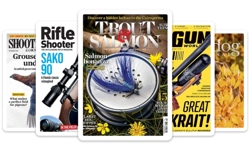I was at the PPA annual conference at the end of April. If there was one topic that dominated the day, both in plenary sessions and during the breaks, it was this: “how do we monetise social media?” More generally, the discussions that aroused most interest focused on getting people to pay for content. And why not? If you can’t get punters to pay for the merchandise, you're heading down the augmented reality tubes.
The panel session that set my writer’s brain whirring was called ‘Anywhere Anytime’. The central question facing the panel was, “Can publishers really deliver high-quality content across multiple platforms and still make money?” [My italics] The panellists were Conor McNicholas, the recently installed editor of Top Gear Magazine; Dominic Smith, the editor of Nuts; and Julian Linley, creative director, Bauer Media, who talked about heat.
People pay for tone
What made me sit up and start listening more intently was Conor McNicholas’s remark that in order to make money on the web, “you have to own the tone”. And it’s true. In a commoditised marketplace – which certainly holds true for cars, girls not wearing very much and celebrity gossip – it’s tone of voice that keeps readers / subscribers / visitors coming back and, eventually, shelling out some folding stuff (or a Direct Debit mandate) for your content. And tone of voice is what you get when you employ professionals – photographers, illustrators, designers, typographers and, of course, writers. People who have studied their craft, in other words. It’s what distinguishes an article in a magazine about cars, gadgets, hobbies or anything else from the impassioned but often illiterate ramblings and ill-framed fuzzy cameraphone shots sheltering under the umbrella of user-generated content (UGC).
It’s clear to anyone who’s ever picked up a copy of Top Gear, Nuts or heat (so that’s got to be most readers of this magazine) that each has a distinctive tone of voice. As has any magazine, whether aimed at consumers, professionals, “prosumers” or business types. So I thought it would be instructive to look at how a copywriter can use a magazine’s distinctive voice to connect more deeply with the reader of marketing communications, to secure a new sub or win them back as a renewal.
First of all though I want to echo Conor McNicholas’s comment that tone of voice is worth paying for. Get tone of voice right in your copy and you connect more deeply with your reader, who pays for the magazine but certainly doesn't feel the same connection to its marketing communications, whether direct mail, in-mag ads, emails or landing pages.
So let’s begin by defining tone of voice. Which is hard. In oral communication, it’s pretty obvious what tone of voice is. It’s the literal tone – or music – in a person’s voice, which can be warm, chatty, conversational, slangy, aggressive, ironic, sarcastic, hysterical, bombastic ... whatever you like. But what about tone of voice in written communication – in copy? Let’s call it the decor of your language. It’s not what you say, but the way you say it. Tone of voice affects the emotional impact your words have on your reader. It can engage them or turn them off, make them trust you or feel suspicious. So although I agree wholeheartedly with the great David Ogilvy, that content is more important than style, once you do have the content nailed, adding the finesse of tone of voice will bring in more orders.
Mates, babes and fab frocks
How do we create a tone of voice? What are the tools we can use to vary it across brands? First, and most importantly I think, is vocabulary. Let’s take our three example magazines: Top Gear, Nuts and heat. Here are a few sentences from a review in Top Gear of a new Peugeot hot hatch – the RCZ. “Somewhere in downtown Paris, a small atomic explosion sent shockwaves as far as the offices of Peugeot UK, from where two emissaries were hastily dispatched to take the author of this article [critical of Peugeot] out for lunch and persuade him, on pain of death, that his prophecy for Peugeot’s future was inaccurate. That Peugeot had a lot to be upbeat about. Which was bollocks.”
The first sentence is written in high register language. Words like “emissaries”, “prophecy” and “inaccurate” for example; the use of the passive voice in “were dispatched”; and the archaic cliché, “on pain of death”. But it’s there partly to lull us. The next sentence fragment prepares the way for the punchline: the blokeish, low-register word “bollocks” that reveals the magazine’s iconoclastic stance.
Here’s an example from a Nuts promotion for World Cup tickets. “While most blokes will be watching the World Cup at home with a beer and a burger, or down the local pub, you and four mates could be flying out to South Africa to watch it live! That’s right, thanks to top fashion retailer USC, you and four pals could be in Cape Town from 14 June with tickets for England vs Algeria.”
No mix of registers here at all – definitely, and defiantly – low-register language. “Blokes” is a key word for identifying with and engaging the reader and what about that “pals”? The only other place you would see that word in 2010 is probably the Sun. Nuts generally is an inheritor of the saucy seaside postcard school of writing – it’s all cheeky humour and ropey puns, whether we’re discussing Jayne from Cardiff’s assets, a Premiership footballer’s off-pitch antics or one reader’s A&E experience after sticking a garden fork through his foot.
Lastly, heat, and a passage from their website: “It’s a good week for fab frocks. The Baftas on Sunday and the Glamour Awards tonight mean there's plenty of outings for the catwalk's finest – and another fashion-tastic event happened last night bringing us some gorge looks. Gwyneth Paltrow showed off her amazing bod in mermaid-like Michael Kors.”
Spot those classic heat words: “fab frocks”, “fashion-tastic”, “gorge” (which somehow doesn’t work so well on the page as it does when you say it) and “amazing bod”. It’s chatty, matey, frivolous and absolutely in line with the reader’s expectations.
Notice how all three of our tone of voice champs use alliteration – “hot hatch”, “beer and a burger”, “fab frocks”. This kind of stylistic device isn’t accidental, any more than the use of sentence fragments (those sentence-like phrases lacking a verb), occasional swearing or the use of playground language. Even Nuts’s decision to talk about a “top” fashion retailer is a play for the reader’s emotional response. The Economist, on the other hand, would probably prefer “leading”.
Does humour belong in copywriting?
Humour can also play a part in defining and modifying tone of voice. And although, in general, humour is less effective in selling copy than a straightforward appeal to the reader’s self-interest, it can be hugely effective in subscriptions copywriting, particularly renewals. Why? Because the reader already has a relationship with the brand, so they are attuned to the tone of voice of the magazine. And as long as the copywriter remembers to include reasons to buy, a dash of the magazine’s distinctive take on life will help the reader absorb the message.
In a renewal series I wrote for Top Gear (yes, I declare an interest, BBC Magazines is a client), we had one letter coming from Jeremy Clarkson. Here are the final two paragraphs:
“Either you’re about to join the greeny-weeny, ‘let’s get married to a dolphin’ nitwits and let your Top Gear subscription expire like some thrashed-to-death Impreza. Or you’re going to do what tens of thousands of other driving enthusiasts have already done and renew it.
Please. Do it now. And then we can tell the woolly jumpers to put the cork back in their nettle champagne.”
Notice that among the Clarksonesque ranting, there’s a nice little bit of social proof, “tens of thousands of other driving enthusiasts”. And a short, punchy call to action in the imperative mood: “Please. Do it now.”
So how might we rewrite that call to action for the other two members of our tone of voice trio? I’ll have a go, Nuts first:
“So come on. Don’t be the only one down the pub who doesn’t get his regular fix of Nuts. Keeley wants you. Stacey wants you. Holly wants you. All our Nuts babes want you to renew your subscription. Do it by Direct Debit and we’ll even give you a tenner off.”
Now heat:
“O.M.G. you still haven’t renewed your subscription to heat. Now you’re missing out on loads of new celebs every week and that makes us sad. Like a catwalk show without Posh in the front row, heat is just not the same without you. Are you going to come back. Say you will. Pretty please?”
Use your ears
If you're not sure whether you’ve nailed the tone of voice for the magazine you’re promoting, I offer you a revision of Doctor Johnson’s comment that “an amateur is a man who writes more than he reads”. An amateur copywriter is someone who looks more than he listens. In other words, read your draft out loud. You’ll hear, faithfully, whether you have captured the authority, the loftiness, the smuttiness, the mad-eyed gonzo journalism, the petrolheadedness, the blingtastic voice you need. More importantly, you'll hear exactly which words, phrases, even punctuation marks you need to tweak to sound like you own the tone.










